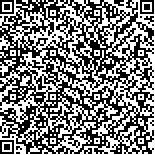| 摘要: |
| 当前我们的城市面临多样化的威胁
人类健康的问题,而城市形态与这些问题关
系较为密切,为塑造健康的人居环境,设计
可持续的城市形态成为当前的研究主流。在
分析国内外相关研究基础上,依据复杂适应
系统,提出非线性特征、空间流动性、局部
与整体协调性、多样性、要素标识优势等评
估内容,采用分形、空间句法、生物多样
性、多维指标构建等方法提出具体量化框架
与步骤。以天津市中心城区为对象评估其形
态的可持续表现,并针对评估结果进行实地
调研,发现评估结果与实际形态表现较为吻
合,证实了评估方法的有效性,也为健康人
居环境设计提供依据。 |
| 关键词: 复杂适应系统 可持续城市形态 评估方法 人居环境 天津市 |
| DOI:10.13791/j.cnki.hsfwest.20231109003 |
| 分类号: |
| 基金项目:国家自然科学基金资助项目(52268010、52278070);河南省省重点研发与推广专项(软科学)项目(232400410199);河南省教育厅人文社会科学研究项
目(2024ZZJH249);河南省社科联年度调研课题(SKL-2024-2522) |
|
| Evaluation method of sustainable urban form for the downtown area of Tianjin based oncomplex adaptive system |
|
HU Junhui,LIU Danfeng,LIU Lirong,REN Lijian,YUN Yingxia
|
| Abstract: |
| Since the concept of sustainable development was put forward in the 1980s, the relationship
between cities and sustainability has been widely concerned by countries and regions around the
world, our cities are still facing problems such as climate change, population explosion, traffic
congestion, environmental deterioration, and increasing social differences, which threaten ecosystem
security and human health. Urban form is closely related to these problems. In order to create a
healthy living environment, the design of sustainable urban form has become the mainstream of
current research. Based on the analysis of relevant researches at home and abroad, this paper
systematically summarizes the concept of sustainable urban form and its differences and connections
with the concepts of sustainable city, urban form, good urban form and ideal urban form. After a brief
review of the current assessment methods of sustainable urban form, it is found that the current
assessment methods are not accurate enough. Based on the analysis of the applicability of complex
adaptive system to the study of sustainable urban form, the core concepts of complex adaptive system
are corresponding to the elements of sustainable urban form. To this end, this paper puts forward five
evaluation contents, such as the evaluation of nonlinear feature gap with ideal urban form, the
evaluation of spatial mobility of form elements, the evaluation of local and integral form elements, the
evaluation of diversity of form elements, and the evaluation of the advantage of form elements
identification. A systematic analysis of the evaluation content, using fractal, space syntax,
biodiversity, multidimensional index construction and other methods to put forward a specific
quantitative framework and steps: using fractal technology to evaluate the nonlinear characteristics of
the ideal shape structure, and explain its applicability to the assessment of sustainable urban shape;
based on space syntax technology, spatial efficiency concepts based on integration degree and
selection degree are used to evaluate the mobility of form elements, and its principle and calculation
method are described. The correlation between the global integration degree and the local integration
degree of space syntax parameters is used to evaluate the local and global coordination, and the
evaluation principle, judgment criteria and methods are described systematically. Three types of
sustainable urban morphological diversity are proposed, and the quantitative methods of each type are
determined based on the measurement method of biodiversity. At the same time, a quantitative
method of the fit degree between diversity and spatial efficiency is proposed to evaluate the spatial
effectiveness of diversity. An index system was established to evaluate the advantage of identificationfrom the aspects of adaptability, connectivity and complexity of morphological elements, and the steps of quantifying connectivity and complexity indexes with
path network analysis were described in detail.Taking the central urban area of Tianjin as the object to evaluate the sustainable performance of its form, the
research finds that: in terms of nonlinear feature gap assessment with the ideal urban form, the current shape dimension of the central urban area has a large gap
with the ideal dimension and the fractal dimension of different functional land has obvious changes. In terms of mobility evaluation of form elements, with the
increase of spatial scale radius, the spatial efficiency showed a trend of concentric circles, and the spatial efficiency was the highest in the center and gradually
decreased to the periphery. In the evaluation of local and overall coordination, the coordination of most streets in the central six districts is good, while the
coordination of the peripheral areas of the central urban area is poor. The results also show that the coordination of historical and cultural districts and the
overall urban area is perfect. In terms of diversity assessment of form elements, the results show that Santiaoshi, Da Hutong, Quanye Chang, Nanshi and
Xinxing streets in the city are poor, other streets are good, and the spatial efficiency and diversity of streets in the old city, the northeast and western edges of
the central city and the lower reaches of Haihe River are poor. In terms of morphological factor identification advantages, the path network quantification
method is adopted, and the results show that the form elements identification advantages in the old city area are the best, while the first-line streets in the outer
ring Road West and North Road in the central city have poor advantages. The field investigation on the evaluation results shows that the evaluation results are
in good agreement with the actual morphological performance, which confirms the effectiveness of the evaluation method. It shows that the proposed
evaluation method can provide a basis for the design of healthy human settlement environment and has great potential for popularization. |
| Key words: complex adaptive system sustainable urban form evaluation method residential environment Tianjin |


